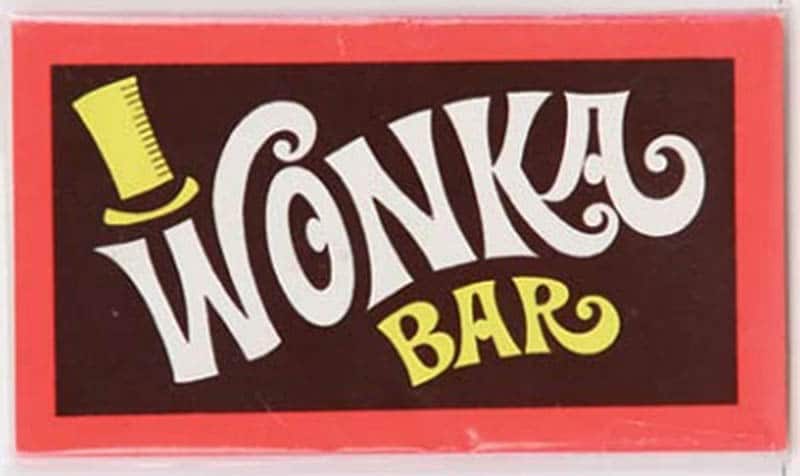
Have You Been Using the Most Powerful Content Marketing Tool Incorrectly?
The Beloved Kid’s Movie You Didn’t Know Was Content Marketing
I had taken a big risk with my kids and it paid ofaf.
I apprehensively showed my sons a movie on-demand that I had grown up loving as a kid. The movie was from the 70’s, so I wasn’t sure whether they’d like it or think it was cheesy.
I was relieved that they ended up loving the movie as much as I did as a kid. In fact, my youngest son liked it so much that five months later he purchased it on Blu-ray DVD.
We brought it home and the whole family sat down to watch the DVD together and we fell in love with the movie even more. After the movie, we did what we always love to do with DVDs. We said, “Let’s watch the ‘Bonus Features!'”
It was while watching the “Bonus Features” section on how the film was made that I made a shocking discovery. I discovered that this movie I loved for decades was actually content marketing.
Now, don’t get me wrong. They didn’t call it “content marketing” in the feature we watched, but I knew instantly that that’s what it was.
(If you’ve read any of my previous posts on this or other sites, then you know that this is how my mind tends to work. I see content marketing examples and lessons everywhere!)
Anyway, it was as I was watching that “Making of the Movie” segment that I realized the mistake that so many content marketers are making these days.
And that’s what my post today is all about. I’ll explain more in a minute, but first you need to hear the surprising story that began to unfold as we watched that bonus feature.
A Little Girl’s Bold Request to Her Father
It was 1970 and, after reading a book she loved, a young girl 10 year-old-girl named Madeline asked her father for a favor.
But this wasn’t just any little girl and her father wasn’t just your average dad.
Her father was Mel Stuart an American film director and producer. And her request was a big one. She wanted her daddy to make the book that she had just read into a movie.
And she was very serious about her request! In fact, she was so serious that she asked her dad to get “Uncle Dave” (producer David L. Wolper) to produce the film.
So Mel Stuart grabbed a copy of the book and began reading it. When he was finished it, he realized that his daughter was right. This book needed to be made into a movie.
So he talked to David Wolper about the idea. He said, “The kid wants us to make this picture and I think it’s pretty good.”
The timing for this idea couldn’t have been any better, because it was during this time that Wolper had been doing some TV shows for Quaker Oats. And Quaker Oats was getting ready to introduce a new candy bar.
When one of the executives at Quaker Oats told Wolper about the candy bar a “light bulb went off” and Wolper instantly thought of this movie that Mel Stuart suggested they make.
So he told the executive, “I have the perfect movie to go with that: Charlie and the Chocolate Factory.”
The Quaker Oats executive immediately replied. “That’s terrific! Let’s make a movie out of it. We’ll release the movie about the same time the candy bar comes out and it’ll be a great promotion for our candy bar!”
Wolper then got Quaker Oats to purchase the rights to the film and commit to financing it. (Quaker Oats committed $3 million dollars to the project.)
As the planning for the candy bar went along, Quaker Oats eventually decided to call it a “Wonka Bar“.
And that’s when Mel and David decided to call the film “Willy Wonka & the Chocolate Factory”, because Mel wanted the name of the chocolate bar in the name of the movie.

Source: Wikipedia
They then hired Roald Dahl, the author of the book, to write the screenplay for the movie. But they felt that the finished script that he wrote was still missing something.
They then made a very bold decision. They decided that they would tweak Dahl’s script with a writer named David Seltzer who Wolper had writing for his TV shows.
They made many small changes to the script, but the two majors changes that they made were:
- They changed the character of Arthur Slugworth to create more of a villain role for the film, so they could add suspense.
- They also changed the ending of the story to make it more powerful. (Do you remember these lines?… Wonka: “Don’t forget what happened to the man who suddenly got everything he wanted.” | Charlie Bucket: “What happened?” | Wonka: “He lived happily ever after.”)
Side Note: Speaking of suspense, I could have personally done without them adding this tunnel scene below to the film. It used to freak me out when I was a kid! Anyone else willing to admit this?
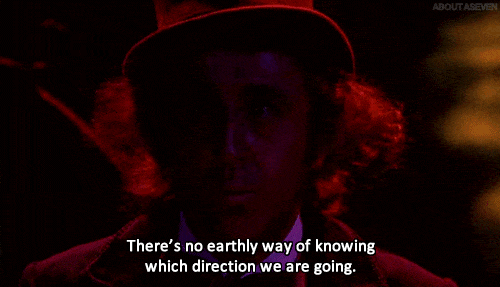
Once they were done tweaking the script, the finished movie was released by Paramount Pictures on June 30, 1971.
It didn’t do extremely well, meaning it didn’t break any box office records. But it did eventually go on to earn about $4 million by the end of its original run.
In 1977, Warner Bros. acquired Wolper Productions and Quaker Oats also decided to sell its share of the film’s rights to Warner Bros. At this point, the film seemed doomed to fade into obscurity.
But luckily, something was about to happen which would rescue it from such a sad fate.
How It Became a Beloved Classic
It was thanks to TV that a later generation of kids in the 80’s fell in love with the movie, because the movie appeared every year on television. Its later release on DVD in the 90’s continued to add to the movie’s cult following.
Here’s how the love for this movie has grown throughout the years:
- In 1972, the film received an Academy Award nomination for Best Original Score.
- That same year, Gene Wilder was nominated for a Golden Globe for Best Actor in a Musical or Comedy
- It made another $21 million when it was re-released in theaters in 1996.
- In 2003, Entertainment Weekly ranked it 25th in the “Top 50 Cult Movies” of all time.
- Because Warner Bros. owned the film, it was easy for them to get the rights to make a new film adaptation that was released in 2005, starring Johnny Depp.
- In 2013, Warner Bros. premiered it as a stage musical adaptation.
- American Film Institute has nominated it for five different of their lists (including the top 100 Funniest American Movies)
Needless to say, the film has become a success beyond any of the wildest dreams that Mel Stuart and David Wolper ever had.
And when you consider the fact that this film is actually content marketing for a chocolate bar, that’s an amazing fact.
But what about that chocolate bar? With such amazing content, you’d think the chocolate bar had to be a success, right? I mean it had to… right!?!
Um… I am sorry to tell you this, but sometimes even the best content can’t save a disaster.
The Failed Chocolate Bar That Even Content Marketing Couldn’t Save
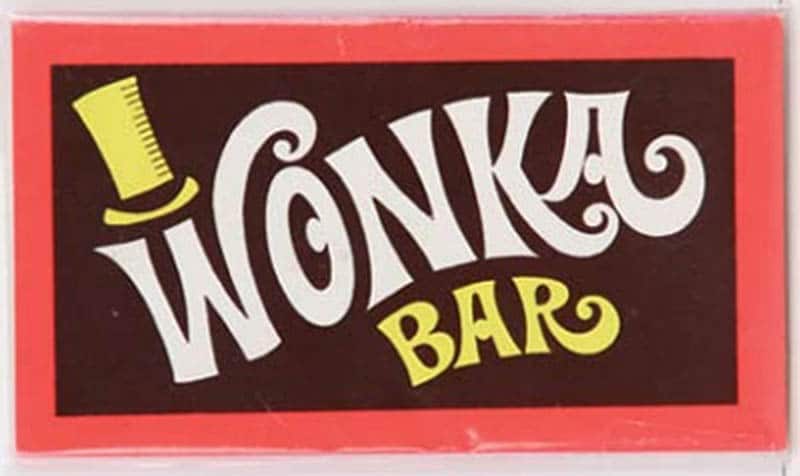
Source: https://www.collectingcandy.com
The film was released and Quaker Oats released the candy bar along with a big promotional campaign. Everything was going as planned. And they were set to watch the sales come rolling in.
But there was one problem.
The candy bar had a problem, a big problem. Because of an error in the recipe, the candy bar melted in the wrapper on the store shelves! The situation was so bad they had to pull all the Wonka Bars from the stores.
And get this. This was before any were even sold!
So the whole reason for the film was now gone. But as David Wolper said, “The candy bar never became famous, but the movie did!”
You might be thinking, “Well, what kind of content marketing lesson can we learn from this since the product failed?”
But wait. Before you click away, you need to realize two things:
- First of all, this isn’t the end of the story. The true impact of this film as content marketing was still about to reveal itself. (I’ll explain more about that in just a little bit.)
- And secondly, I think that even if the story ended here there are still some very powerful content marketing lessons for us to learn.
In fact, I had only heard the story up to this point, when I realized the biggest mistake most content marketers are making.
Story-Based Content Marketing vs Story-Infused Content Marketing
The most powerful content marketing tool that exists is the story. I know. I know. You’ve heard that a millions times. But hold on a second.
Because even though you might have heard about the power of stories before, many content marketers are missing out on the most powerful way to harness the true power of stories.
Let me explain.
I think that many content marketers are harnessing the power of stories using what I would call “Story-Infused Content Marketing“, in other words, content marketing that contains stories.
That’s great. And it’s very needed!
But I think there is a deeper, more powerful way to tap into the power of stories and that is when we create content marketing that is what I would call “Story-Based Content Marketing“.
This is when the whole content marketing piece is a story and/or is built upon the elements that all great stories possess.
Think about it.
If a typical content marketer would’ve created content marketing for the “Wonka Bar”, then he/she would’ve probably used a story, statistics, case studies, testimonials, etc. to market the candy bar.
That’s not a horrible plan. But what did Wolper do? He made the whole thing a story. The whole thing – from beginning to end – was a story. And he focused on making it an awesome and engaging story.
Examples:
- To explain the Wonka Bar itself: There was the fictional story about Willy Wonka and his amazing factory.
- To explain how much kids would love the candy bar: They told the story about theses kids who loved all of Wonka’s creations – so much so that they’d even fight to get their hands on one of those chocolate bars.
Do you understand what I am saying? The content marketing was all story-based. They never stepped out of the story to speak to the audience or to promote the candy bar.
What’s the difference between story-based content marketing and story-infused content marketing?
Oh, not much. It’s just the difference between a firecracker and a stick of dynamite.
If you want to create a small “bang” with your content, then infuse your content marketing with a story.
If you want to leave behind a giant crater in the aftermath of your content, then make your whole content marketing piece story-based.
6 Reasons That Story-Based Content Marketing is So Powerful
Now let me give you some important reasons why story-based content marketing is so powerful.
1. Story-based content marketing enables you to “show”, not just “tell”
In an issue of the newsletter The Writer’s Life, Mindy McHorse shared something powerful that Copywriter Jen Stevens (Editor of International Living), once said…
“‘Show don’t tell’ means that you shouldn’t just announce directly what a place is like and how it makes visitors feel. Instead, you should describe it in such a rich way that your reader experiences it for himself …”
Stories cause people to vicariously experience your product!
Experience is always more powerful than hearsay. So think of story-based content marketing as a virtual way for you to let people sample your product or service.
2. Story-based content marketing powerfully and subtly influences worldviews
Jonah Sachs in his book Winning The Story Wars: Why Those Who Tell (and Live) the Best Stories Will Rule the Future says something powerful about the influence of stories.
He says, “Stories are a particular type of human communication designed to persuade an audience of a storyteller’s worldview.”
He goes on to say, “The storyteller does this by placing characters, real or fictional, onto a stage and showing what happens to these characters over a period of time. Each character pursues some type of goal in accordance with his or her values, facing difficulty along the way and either succeeds or fails according to the storyteller’s view of how the world works.”
Most of us think that rhetoric and logic are the best way to influence others. We think that stories are just pleasant parts of communication used mainly to engage people.
But Sachs says that stories are designed to persuade an audience to a storyteller’s point of you. I bet you’ve never thought of stories this way before!
My next reason will show you just how persuasive story-based content marketing can actually be.
3. Story-based content marketing isn’t argued with, it is just listened to
Really think for a minute about what Sachs just said. This is the most overlooked power of TV and movies, which are the most loved form of storytelling in our culture.
You probably don’t realize this, but we are constantly being fed other people’s opinions via TV shows and movies. But because it’s wrapped in a story we don’t feel like someone is pushing their opinions on us.
Not only that, but we feel what the characters are feeling and we empathize with those characters. Sachs say this about this phenomenon, “Stories allow people to feel that they have experienced things they’ve only heard.”
In PBS special series called America in Primetime, they featured the co-creator of Modern Family, Steven Levitan. He said something about his show that reveals this power of storytelling.
He said, “You never know if we’re a product of the tastes of the television audience or if we are in some way shaping the tastes or direction of television.”
Did you hear that?
Storytelling is so powerful that the creator of one of today’s most popular shows doesn’t know if his show is influencing the tastes of his audience or if they are a product of his audience’s tastes!
Let’s stick on this subject of influence for a second, because we often overlook the most basic type of influence that stories tap into in order to impact our lives.
4. Story-based content marketing allows us to be more human
In a blog post called “The best marketing insight I’ve received in the past 5 years” Mark Schaefer describes this powerful form of influence like this…
“While doing research for my book Return On Influence, I asked him, ‘Dr. Cialdini, in this information-dense world, how does a leader stand out?’
“His reply: ‘Be more human.’
“Ultimately people will buy from who they know, who they trust. That isn’t going to come from the best backlinks or the most optimized content. I think the most human content and the most human companies will win in this competitive world.”
Did you catch that?
The most human companies will win in this competitive world.
Humans tell stories, have their own stories, and are a part of other’s stories.
The more you can use story-based content marketing, then the more human your company will be in your prospect’s mind and your influence over them will increase exponentially.
5. Story-based content marketing enables us to make the customer the star
Think about it. In Willy Wonka & the Chocolate Factory, the product wasn’t the star. Charlie was.
Think about how powerful that is for minute. Who did every kid who saw that movie want to be? Charlie! He got the chocolate bar with the winning ticket. He was the one chosen to take over the Chocolate factory. Charlie was the hero!
And what did Charlie want more than anything? What changed his life? That Wonka Bar!
Most of the time, content marketers use story-infused content where their product or service is the star. It is the hero.
Do you see how this strategy that seems so right is totally missing the mark?
If Quaker Oats would have thought this way and insisted that their chocolate bar was the star, then the movie would’ve flopped. Why? No one in the audience could have related to a chocolate bar. It wouldn’t have had any emotional pull on their audience.
It’s only the type of story in which the audience can relate to the star (and even want to be that person) that will truly impact your prospects and customers. That’s what story-based content marketing lets you do.
Now let me leave you with one last reason that story-based content marketing is so powerful.
6. Story-based content marketing helps us to create content that stands out from the pack
In a post on ContentMarketingInstitute.com called “One Thing Is Killing Content Marketing and Everyone Is Ignoring It“, Joe Pulizzi talked about an overlooked problem that he believes content marketing has these days.
In that post, Joe asked, “Is the content you are creating and distributing for your customers any different than anything else out there?”
Many in your industry or niche are creating the same generic content over and over and over again. A smart few are creating content infused with stories and they are standing out above the rest.
But I bet there is hardly anyone who is fully harnessing the power of stories by using story-based content marketing. Now that you know its power, you can begin to harness it and blow away the competition.
Now that you’ve seen how powerful content marketing that is story-based is, it’s finally time for you to hear the rest of the story about what happened after the chocolate bar debacle.
(And if you keep reading, I’ll give you a powerful, real-world example of one person who has harnessed the power of story-based content marketing.)
Wonka: The Rest of the Amazing Story
As you now already know, the original Wonka Bars never made it to consumers. But what you don’t know is that later Wonka products did make it to market and they were very successful.
In fact, Breaker Confections (which was owned by a subsidiary of Quaker Oats) saw so much success from the content marketing of that movie that they changed their name to Willy Wonka Brands in 1980.
Then, in 1988, Quaker Oats sold Willy Wonka Brands to Nestlé. In 1993, Nestlé changed the name Willy Wonka Brands to Willy Wonka Candy Company connecting the branding even more with the fictional company.
They now have a large amount of products that are based on the Willy Wonka brand, as well as additional products they’ve created. (Everlasting Gobstoppers and Wonka Bars are two that you’ll recognize from the movie.)
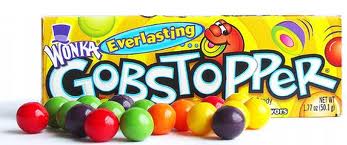
Source: https://charlieandthechocolatefactoryfilm.wikia.com/wiki/Everlasting_Gobstoppers
That is the power of story-based content marketing. It is so powerful that the results can last even longer than Wonka’s Gobstoppers!
Some of you are thinking, “Ok, fine. I agree that story-based content marketing is powerful. But how does a business actually apply this?”
There’s no way that I can go into all the details of how you could apply story-based content marketing in this one post. Because I could easily speak about this topic for an hour or take a few months to help someone implement it.
So in the final space and time I have left, I will give you a real-world example of someone who has implemented story-based content marketing.
American Archaeology: A Company That Has Harnessed the Power of Story-Based Content Marketing
You might not have heard of the antiques and collectibles store American Archaeology, but I know you’ve heard of its owner Mike Wolfe.
Mike is one of the stars of the hit show American Pickers, which is seen on the History Channel. You might think of it as just a TV show, but Mike doesn’t.
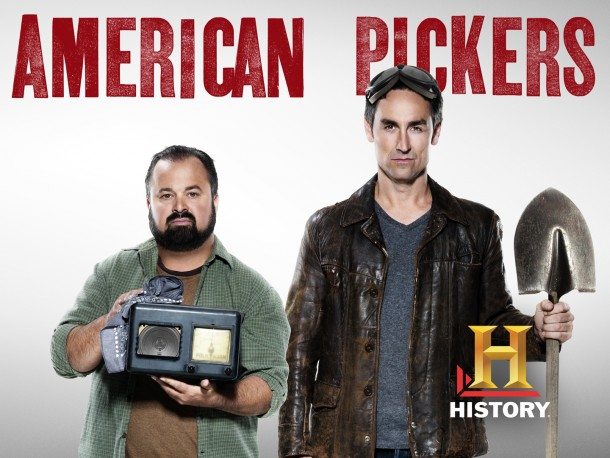
Source: History.com
In the September 2011 issue of Entrepreneur magazine, Mike said…
“I’ve always bought what I liked, and I’ve made a living off of my eye and my gut and what I think is cool,” Wolfe says. “On Monday nights, I have an hour-long commercial on what I think is hot. Imagine being in business and having that opportunity. Whatever we’re finding, people are like, ‘Wow, that’s cool. I love it. I want to buy one of those.‘”
Mike knows the show is content marketing for his store. But notice that he doesn’t just focus on story-infused content marketing. He uses story-based content marketing.
In that same article from Entrepreneur magazine Mike says…
“The people we pick are the real stars of the show,” Wolfe says. “Audiences remember [fan-favorite collectors] Hobo Jack and the Mole Man. They remember the people, not what I bought from them. Frank and I are just telling their stories. It’s a business, yes, but it’s always been an honor that people open their homes and their hearts to us.”
Mike has created content that is all story-based. Mike focuses on “showing”, not just “telling”. The reason this show is a hit is because it’s not just a show about two guys buying junk from people.
It’s the continuing story of two “treasure hunters.” And it’s not just the story of inanimate treasures. It’s the story of Mike Wolfe and Frank Fritz discovering these amazing people who have lived interesting lives.
But there’s still more to the story that they tell than that. This show also contains the element of suspense and surprise. You never know where Mike and Frank will end up, who they’ll meet, and what they will discover.
Not only that, but there is also an element I’d call “tension and battle.” Part of the excitement of watching the show is the back and forth negotiating between Mike and Frank and the person they are buying from. You want to see if Mike and Frank will get a good deal. You want to see if the person selling it will get a decent price too.
Look closely at these things I pointed out. Do they look familiar? They should! They’re the common elements of a good story!
That’s what gives their show American Pickers the ability to draw such a large audience. People might not care about “picking” or “antiquing”, but they can’t resist the power stories!
And what’s the result?
Mike’s business is booming. He now has two locations. And that’s not all. The story-based content marketing has enabled him to create a brand. Besides antiques and collectibles, he also sells branded clothing, hats, posters, and more.
Now please don’t get stuck on the medium that was used in these stories I’ve shared. Don’t think, “But I can’t make a movie or a TV show!” Story-based content marketing is not about the medium. It’s about the method.
You can use story-based content marketing with a book, in a podcast, and in other ways.
What I want you to realize today is that the most powerful content marketing tool in existence is only being partially employed by most content marketers. They’re just using a sprinkling of story in their content.
If you realize this, and begin to submerge your content marketing into a story, then you will see much greater results than they are.
Source: DVD “Bonus Feature” – Pure Imagination: The Story of Willy Wonka and the Chocolate Factory | Other Info: Wikipedia – Willy Wonka and the Chocolate Factory (Film)






